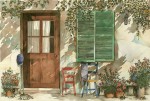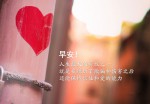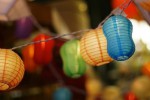
游红旗渠英语作文七年级【一】
we left home at seven o'clock in the morning, and it took us about an hour to drive there。 then we got to the lake。 oh, how large the lake was!there were many green trees and red flowers around it。 we got on a small boat and rowed it。 the sky was clear and the breeze touched our faces softly。 i sang while rowing the boat。after we had lunch in a small restaurant, we returned home。 i really hope to go there next spring!
昨天我和妈妈去了城东40公里远的.东湖。我在那里玩得很开心。
我们早晨7点钟离开家,驾车去那里用了大约一个小时。然后我们到了那个湖。啊,这湖多大啊!湖的周围是绿树红花。我们上了一只小船开始划了起来。天气晴朗,微风拂面,我一边划船一边唱歌。在一家小饭店吃过午饭后,我们回家了。我真希望明年春天再去那里!
游红旗渠英语作文七年级【二】
??颐和园英语作文范文The Summer Palace can be divided into two parts: Longevity Hill and Kunming Lake. The whole garden covers an area of 290 hectares, of which three- fourths consists of a lake and rivers. This imperial garden features 3,000 room-units and covers an expanse of 70,000 square meters with more than 100 picturesque spots of interest. The layout of the Summer Palace includes three groups of architectures: palaces where the emperor attended to state affairs, resting palaces of the emperor and empress, and sightseeing areas. Entering the East Gate we will come the office quarters. Entering the East gate we will come to the office quarters. The annex halls on both sides were used for officials on duty.
This is the Gate of Benevolence and Longevity. Above the door there is a plaque bearing the same name in both Chinese and Manchurian characters. The gigantic rock in the foreground is known as Taihu rock, or eroded limestone, quarried in Jiangsu Province and placed here to decorated the garden.
On the marble terrace sits a bronze mythical beast, known as Qilin or Xuanni. It was said to the one of the nine sons of Dragon King. A point of peculiar interest is that it has the head of a dragon, antlers of a deer, the tail of a lion and hooves of an ox, and is covered with a unique skin. IT was considered an auspicious creature that brought peace and prosperity.
This grand hall is the Hall of Benevolence and Longevity. It was built in 1750, and was known as the Hall of Industrious Government. Emperor Qianlong ruled that the halls where monarchs attended to state affairs would be named after them. After the rebuilding of the Summer Palace, the hall was renamed, suggesting that benevolent rulers would enjoy long lives.
The arrangement of the hall has been left untouched. In the middle of the hall stands a throne made of sandalwood and carved with beautiful designs. In the background there is a screen carved with nine frolicking dragons. On either side of the throne there are two big fans made of peacock feathers, two column-shaped incense burners, crane-shaped lanterns and an incense burner assuming the form of Luduan, a mythological animal which was suppose to have the power to prevent fire. The small chambers on eight side were where the Emperor Qianlong and Empress Dowager Cixi rested and met officials on formal occasions.
On the verandah in the foreground of the hall there are bronze statues of dragon and phoenixes which served as incense burners on major occasions. They are hollow and smoke comes through holes on their backs. Also on the veranda are Tai Ping (Peace bronze water vats made during the reign of Emperor Qianlong. As a precaution in case of fire, a fire was lit underneath the vats in the winter to keep the water in them from freezing.
(At the entrance of Garden of Virtuous Harmony
Outside the East Gate–in front of the Hall of benevolence and Longevity- in front of Garden of Virtuous Harmony-in front of the Grand Theater Building- a lakeside walk from the Garden of Virtuous Harmony to the Hall o Jade Ripples- in front of the o Jade Ripples- in front of the Yiyunguan (Chamber of Mortal Being-Hall of happiness and longevity- in front of the Yaoyue (Chamber of Mortal Beings-Hall of Happiness and Longevity-in front of the Yaoyue (Inviting the Moon Gate of the Long Corridor- strolling along the Long Corridor- visiting an exhibition of cultural relics- in front of the Hall of Dispelling Clouds- inside the Hall of Dispelling Clouds- atop the Tower of Buddhist Incense- on a hilltop leading from the back door of the Tower of Buddhist Incense- on a hilltop leading from the back door of the Tower of Buddhist Incense- inside the Garden of Harmonious Interest –outside the south gate to Suzhou Shopping Street- atop the stone bridge inside the Suzhou shopping street –on the road from the south gate of suzhou shopping street- on the road form the south gate of suzhou shopping street to the marble boat- in front of the ruins of the Garden of complete spring –along the lakeside by the marble boat-boating on the Kunming Lake-leaving out through the East Gate.
(Outside the east gate
Ladies and Gentlemen:
Welcome to the Summer Palace. (After the self-introduction of the guide -interpreter I hope this will be an interesting and enjoyable day for you.
During our tour, you will be introduced to time honored historical and cultural traditions, as well as picturesque views and landscapes.
The construction of the Summer Palace first started in 1750. At that time, the Qing Dynasty was in its heyday and China was a powerful Asian country with vast territories. The monarch in power then was Emperor Qianlong. With supreme power and large sums of money, he summoned skillful and ingenious artisans from all over the country to carry out this construction work in honor of his mother's birthday. After 15 years and one seventh of the nation's annual revenue spent, the Garden of Clear Ripples was completed and served as a testimony to China's scientific and technological achievements. In 1860, this vast royal garden was burnt down along with the Yuanming Yuan (Garden of Perfection and Brightness by Angol-French allied forces. In 1888, Empress Dowager Cixi reconstructed the garden on the same site and renamed it the Garden of Nurtured Harmony (Summer Palace. Characterized by its vast scope and rich cultural embodiments, the Summer Palace has become one of the most famous tourist sites in the world.
This is the main entrance to the Summer Palace-the East Gate On top of the eaves of the door there is a plaque bearing a Chinese inscription which means "Garden of Nurtured Harmony", whose calligrapher was Emperor Guangxu. The gate that you are now entering was used exclusively by the emperor, the empress and the queen mother. All others used the side doors.
游红旗渠英语作文七年级【三】
万物沉醉于梦中,大地一片祥和宁静时,我们已动身飞往澎湖了。
到了澎湖,我们首先搭乘“海安一号”游北海四岛——吉贝屿、姑婆屿,木头屿和铁砧屿等。碧蓝的海与蔚蓝的天空相连,一阵阵海风使人心旷神怡,也吹起海婆婆的皱纹,却掩饰不住其中的无限生机与活力。第一站是吉贝屿。吉贝屿的海滩上有最美丽的饰品——贝壳,像夜晚的星星般玲珑,也像无数只眼睛对我眨呀眨的!在短短的时间里,我们不仅参观了千百年珊瑚和海树,还偸拔了当地名产——花生和灰姑娘的马车——南瓜。正当我们神游其中时,汽笛声响起,只好抱着“收获”匆匆上船。接着,到了姑婆屿。它是著名的“玩水世界”,千奇百怪的玩法,五花八门的器材,样样都动人心弦。最后我和弟弟选择了浮潜,穿了救生衣,带了蛙镜、呼吸管,下水一看,哇!好多身穿艳装的鱼儿——花色斑驳者、集体行动者、体态轻盈者……各式各样的鱼儿,好似要参加盛大宴会一般,海葵,海草都摆动着身体祝福,只有海星默默的祝福——一路平安,尽兴而归。这一切让我大开眼界,叹为观止。下一站要到澎湖群岛中最北方的岛屿——目斗屿。我们从姑婆屿搭乘小汽船,将手往外伸,只觉得清凉无比。此岛虽然小,四周的“海岸线”绝离不开你的“视线”,但别小看它喔!它可有一座黑白相间的灯塔,在茫茫大海中指引船只,功不可没!最后目睹了像砧板的岛屿——铁砧屿。这里郁郁青青,百卉含英,全是取之不尽、用之不竭的天堂地设之宝。生活在此,心灵哪有不豁达开朗的呢?
夕阳西沉了,一件黑衣覆盖了山巅和大地,我们回到了澎湖本岛。当晚,疲惫不堪的我却辗转反侧,一直在期待明天的到来。
雄鸡一声天下白,不寻常的天气,笼罩着澎湖,我们难掩兴奋之情,浩浩荡荡地朝南海前进。高低起伏的波澜像是一群轿夫,奋勇地把众人由此岸送到彼岸,不畏险恶,乘风破浪。柱状的玄武岩雄伟独特地映入眼帘——桶盘屿到了,大家不禁赞叹造物主的鬼斧神工。看!澎湖神话故事之一——天台山上的吕洞宾大脚印,正一清二楚地展现在我的面前,这就是望安岛。岛上有古色古香的闽式建筑物,其中还有窗扉上用砖头排列成“卍”纹样的大户人家。提起澎湖,便会让人想起无人不知,无人不晓的桂花巷,它和鹿港的“摸乳巷”同样名闻遐迩!另有陆小芬在此拍摄——在井边洗澡,当时极为轰动,“大批人潮”前来窥视,许多古迹的屋顶就因此坍陷了,真是江山易改,本“色”难移呀!忽见一丛小花热情地对我招手,摇曳生姿,婆娑起舞。哦!原来那就是著名的`天人菊。我于是弯下腰,和它问好,并挥手告别。此时,大自然这位大画家毫不留情地画下几笔粗粗的风,撇下无数的细雨,莫非台风的脚步近了,我们只好“弃”七美屿而去了。
果然,气象局发生了陆上台风警报,马工机场也宣布关闭。顿时,我们的心情从极度兴奋的高潮,变成了波涛汹涌的起伏,个个危坐颦眉。唉!人算不如天算,下午又是狂风骤雨……尽管如此,仍阻挡不了我们的游兴:爸妈各租了一辆车,在风雨飘摇中踏遍澎湖本岛,见到了彩虹般的跨海大桥、四眼井、蔡进士第、妈祖庙,而让我印象最深的则是风柜的巨浪排空,卷起千堆雪的奇景,至今深深地烙在心版,永不能忘怀!











